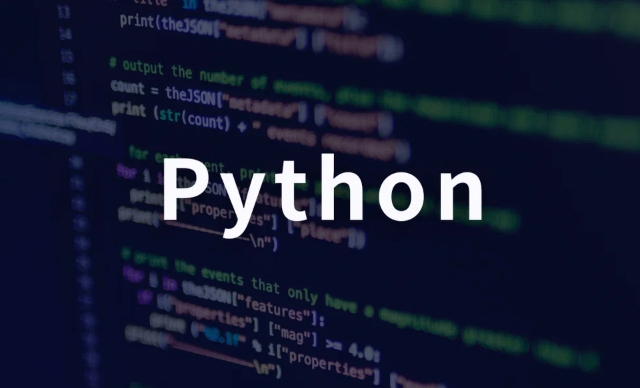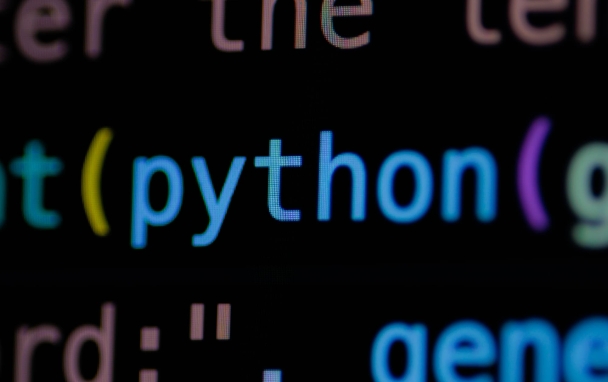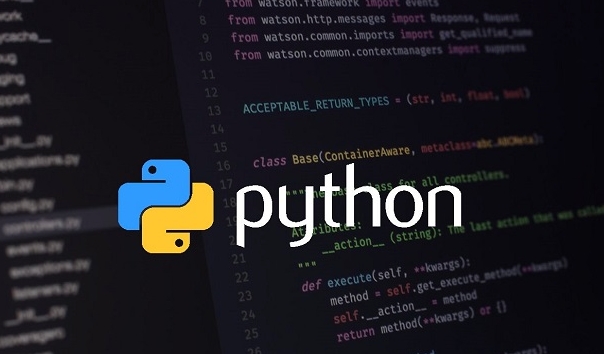Python connection to databases can be implemented through SQLAlchemy or directly using database drivers. If you need to maintain complex queries or cross-database compatibility, it is recommended to use SQLAlchemy. Its ORM module supports object mapping and Core module provides structured queries. After installation, it is established through create_engine() and operates data with session; for small scripts or one-time tasks, you can choose to directly connect drivers such as sqlite3, psycopg2, etc., and the code is concise and efficient. In any case, the credential security should be properly managed to avoid hard-coded passwords. It is recommended to use environment variables, configuration files or key management tools, and ensure that the connection is closed in time after use to prevent resource leakage.

Connecting to databases using Python is a common task for applications ranging from data analysis to web development. Whether you use SQLAlchemy or connect directly via a database driver, the key is knowing what you need and choosing the right approach.

Why You Might Use SQLAlchemy
SQLAlchemy offers an abstraction layer over raw SQL, making it easier to work with databases in an object-oriented way. It supports multiple backends (like PostgreSQL, MySQL, SQLite) and helps avoid writing database-specific code.

- If your project involves complex queries or needs to switch between databases later, SQLAlchemy can save time.
- Its ORM (Object Relational Mapper) lets you map Python classes to database tables without writing much SQL.
- Even if you don't want full ORM features, SQLAlchemy's Core module gives structured query building while still allowing raw SQL when needed.
To get started:
- Install with
pip install sqlalchemy - Use
create_engine()to connect - Reflect tables or define models
- Query using session objects or execute raw SQL
This approach works well for apps that value maintenance and flexibility.

When Going Direct Makes Sense
Sometimes, using a direct connection with a database driver is simpler and faster. This is especially true for small scripts or one-off tasks where setting up ORM layers feels like overkill.
For example:
- Connecting to PostgreSQL with
psycopg2 - Using
sqlite3for local SQLite files - Accessing MySQL through
mysql-connector-pythonorpymysql
These methods are straightforward. Here's a quick example:
import sqlite3
conn = sqlite3.connect('example.db')
cursor = conn.cursor()
cursor.execute("SELECT * FROM users")
rows = cursor.fetchall()This style is good for quick access, especially when performance matters or the logic is simple.
Handling Credentials and Security
Regardless of your method, managing credentials securely is cruel. Hardcoding passwords in scripts is risky — especially if you share or commit them accidentally.
Some safe practices:
- Store credentials in environment variables
- Use config files outside your source directory
- Rotate credentials regularly
- Avoid printing or logging sensitive values
If you're working in a team or deploying to cloud environments, tools like AWS Secrets Manager or HashiCorp Vault can help manage access dynamically.
Also, always close connections after use. Leaving open connections can lead to resource exhaustion, especially in long-running processes or web apps.
Final Thoughts
Which method you choose depends on your project size, complexity, and how much abstraction you need. SQLAlchemy is powerful and flexible but may be more than you need for small tasks. Direct connections are fast and simple but lack some of the structure and safety features of ORM tools.
At the end of the day, both approaches get the job done — it's just about matching the tool to the task.
The above is the detailed content of Connecting to Databases with Python (SQLAlchemy or direct). For more information, please follow other related articles on the PHP Chinese website!

Hot AI Tools

Undress AI Tool
Undress images for free

Undresser.AI Undress
AI-powered app for creating realistic nude photos

AI Clothes Remover
Online AI tool for removing clothes from photos.

Clothoff.io
AI clothes remover

Video Face Swap
Swap faces in any video effortlessly with our completely free AI face swap tool!

Hot Article

Hot Tools

Notepad++7.3.1
Easy-to-use and free code editor

SublimeText3 Chinese version
Chinese version, very easy to use

Zend Studio 13.0.1
Powerful PHP integrated development environment

Dreamweaver CS6
Visual web development tools

SublimeText3 Mac version
God-level code editing software (SublimeText3)

Hot Topics
 How does Python's unittest or pytest framework facilitate automated testing?
Jun 19, 2025 am 01:10 AM
How does Python's unittest or pytest framework facilitate automated testing?
Jun 19, 2025 am 01:10 AM
Python's unittest and pytest are two widely used testing frameworks that simplify the writing, organizing and running of automated tests. 1. Both support automatic discovery of test cases and provide a clear test structure: unittest defines tests by inheriting the TestCase class and starting with test\_; pytest is more concise, just need a function starting with test\_. 2. They all have built-in assertion support: unittest provides assertEqual, assertTrue and other methods, while pytest uses an enhanced assert statement to automatically display the failure details. 3. All have mechanisms for handling test preparation and cleaning: un
 How can Python be used for data analysis and manipulation with libraries like NumPy and Pandas?
Jun 19, 2025 am 01:04 AM
How can Python be used for data analysis and manipulation with libraries like NumPy and Pandas?
Jun 19, 2025 am 01:04 AM
PythonisidealfordataanalysisduetoNumPyandPandas.1)NumPyexcelsatnumericalcomputationswithfast,multi-dimensionalarraysandvectorizedoperationslikenp.sqrt().2)PandashandlesstructureddatawithSeriesandDataFrames,supportingtaskslikeloading,cleaning,filterin
 What are dynamic programming techniques, and how do I use them in Python?
Jun 20, 2025 am 12:57 AM
What are dynamic programming techniques, and how do I use them in Python?
Jun 20, 2025 am 12:57 AM
Dynamic programming (DP) optimizes the solution process by breaking down complex problems into simpler subproblems and storing their results to avoid repeated calculations. There are two main methods: 1. Top-down (memorization): recursively decompose the problem and use cache to store intermediate results; 2. Bottom-up (table): Iteratively build solutions from the basic situation. Suitable for scenarios where maximum/minimum values, optimal solutions or overlapping subproblems are required, such as Fibonacci sequences, backpacking problems, etc. In Python, it can be implemented through decorators or arrays, and attention should be paid to identifying recursive relationships, defining the benchmark situation, and optimizing the complexity of space.
 How can you implement custom iterators in Python using __iter__ and __next__?
Jun 19, 2025 am 01:12 AM
How can you implement custom iterators in Python using __iter__ and __next__?
Jun 19, 2025 am 01:12 AM
To implement a custom iterator, you need to define the __iter__ and __next__ methods in the class. ① The __iter__ method returns the iterator object itself, usually self, to be compatible with iterative environments such as for loops; ② The __next__ method controls the value of each iteration, returns the next element in the sequence, and when there are no more items, StopIteration exception should be thrown; ③ The status must be tracked correctly and the termination conditions must be set to avoid infinite loops; ④ Complex logic such as file line filtering, and pay attention to resource cleaning and memory management; ⑤ For simple logic, you can consider using the generator function yield instead, but you need to choose a suitable method based on the specific scenario.
 What are the emerging trends or future directions in the Python programming language and its ecosystem?
Jun 19, 2025 am 01:09 AM
What are the emerging trends or future directions in the Python programming language and its ecosystem?
Jun 19, 2025 am 01:09 AM
Future trends in Python include performance optimization, stronger type prompts, the rise of alternative runtimes, and the continued growth of the AI/ML field. First, CPython continues to optimize, improving performance through faster startup time, function call optimization and proposed integer operations; second, type prompts are deeply integrated into languages ??and toolchains to enhance code security and development experience; third, alternative runtimes such as PyScript and Nuitka provide new functions and performance advantages; finally, the fields of AI and data science continue to expand, and emerging libraries promote more efficient development and integration. These trends indicate that Python is constantly adapting to technological changes and maintaining its leading position.
 How do I perform network programming in Python using sockets?
Jun 20, 2025 am 12:56 AM
How do I perform network programming in Python using sockets?
Jun 20, 2025 am 12:56 AM
Python's socket module is the basis of network programming, providing low-level network communication functions, suitable for building client and server applications. To set up a basic TCP server, you need to use socket.socket() to create objects, bind addresses and ports, call .listen() to listen for connections, and accept client connections through .accept(). To build a TCP client, you need to create a socket object and call .connect() to connect to the server, then use .sendall() to send data and .recv() to receive responses. To handle multiple clients, you can use 1. Threads: start a new thread every time you connect; 2. Asynchronous I/O: For example, the asyncio library can achieve non-blocking communication. Things to note
 Polymorphism in python classes
Jul 05, 2025 am 02:58 AM
Polymorphism in python classes
Jul 05, 2025 am 02:58 AM
Polymorphism is a core concept in Python object-oriented programming, referring to "one interface, multiple implementations", allowing for unified processing of different types of objects. 1. Polymorphism is implemented through method rewriting. Subclasses can redefine parent class methods. For example, the spoke() method of Animal class has different implementations in Dog and Cat subclasses. 2. The practical uses of polymorphism include simplifying the code structure and enhancing scalability, such as calling the draw() method uniformly in the graphical drawing program, or handling the common behavior of different characters in game development. 3. Python implementation polymorphism needs to satisfy: the parent class defines a method, and the child class overrides the method, but does not require inheritance of the same parent class. As long as the object implements the same method, this is called the "duck type". 4. Things to note include the maintenance
 How do I slice a list in Python?
Jun 20, 2025 am 12:51 AM
How do I slice a list in Python?
Jun 20, 2025 am 12:51 AM
The core answer to Python list slicing is to master the [start:end:step] syntax and understand its behavior. 1. The basic format of list slicing is list[start:end:step], where start is the starting index (included), end is the end index (not included), and step is the step size; 2. Omit start by default start from 0, omit end by default to the end, omit step by default to 1; 3. Use my_list[:n] to get the first n items, and use my_list[-n:] to get the last n items; 4. Use step to skip elements, such as my_list[::2] to get even digits, and negative step values ??can invert the list; 5. Common misunderstandings include the end index not






